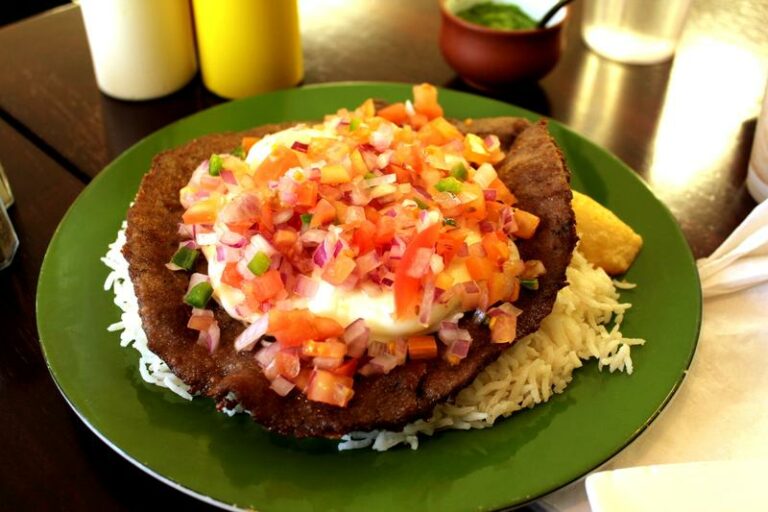Introduction: Exploring Bolivian Cuisine
Bolivia, a landlocked country in South America, is home to a rich and diverse culinary culture. Bolivian cuisine combines indigenous ingredients and techniques with Spanish, African, and Asian influences to create unique flavors and dishes. Whether you are a food enthusiast or a curious traveler, exploring Bolivian cuisine is a must-do activity that will allow you to discover the country’s history, geography, and traditions through its food.
The Importance of Food in Bolivian Culture
Food is an essential element of Bolivian culture, and it plays a vital role in social gatherings and celebrations. Bolivians take pride in their traditional dishes, which are often passed down from generation to generation. From festivals to family dinners, food is a way to bring people together, share stories, and honor their heritage. Bolivian cuisine is also closely linked to the country’s geography, as many ingredients are sourced locally and reflect the diverse landscapes, from the Andes Mountains to the Amazon rainforest.
A Diverse Culinary Landscape: Regions and Influences
Bolivian cuisine varies by region, with different ingredients and techniques used in the highlands, valleys, and lowlands. The three main regions are the Altiplano, the valleys, and the Amazon. Each region has its own unique flavors and dishes, influenced by the indigenous cultures and the Spanish colonial period. The Altiplano, located in the Andes Mountains, is known for its hearty stews and soups, while the valleys are famous for their fruit and vegetable-based dishes. The Amazon region is home to exotic fruits, fish, and game meats, which are used in traditional dishes such as Tacacho and Majadito.
The Staple of Bolivian Cuisine: Corn and Potatoes
Corn and potatoes are the staple ingredients of Bolivian cuisine, and they are used in a variety of dishes, from soups and stews to snacks and desserts. Bolivians have been cultivating potatoes for thousands of years, and there are over 2000 varieties of potatoes in Bolivia alone. Corn is also a significant crop, and it is used in dishes such as Api, a warm drink made from purple corn, and Salteñas, a savory pastry filled with meat, potatoes, and vegetables.
Bolivian Main Dishes: From Pique Macho to Silpancho
Bolivia has a vast array of main dishes, each with its unique flavors and preparation methods. Pique Macho is a hearty dish made with beef, sausage, potatoes, and vegetables, topped with a spicy sauce. Silpancho is a thin beef steak, breaded and fried, served with rice, potatoes, and a fried egg. Other popular dishes include Fricase, a pork stew with potatoes and corn, and Ají de Lengua, a tongue in a spicy sauce.
Vegetarian Options: Chuño and Quinoa
For vegetarians, Bolivian cuisine offers several options, including Chuño and Quinoa. Chuño is a type of freeze-dried potato that has been a staple in the Andes for centuries. It is often used in soups and stews and can be rehydrated by soaking it in water. Quinoa is another superfood that originated in the Andes and is popular worldwide. It is used in salads, stews, and as a substitute for rice.
Desserts and Snacks: Api, Buñuelos, and More
Bolivian cuisine offers a variety of sweet treats and snacks, perfect for satisfying your cravings. Api is a warm drink made from purple corn, cinnamon, and cloves, sweetened with sugar or honey. Buñuelos are fried dough balls, often served with honey or syrup. Other popular snacks include Chicharrón, fried pork belly, and Anticuchos, skewers of marinated beef heart.
Sampling Bolivian Flavors: Where to try Traditional Dishes
If you want to try Bolivian cuisine, the best place to start is in local markets and restaurants. La Paz’s Mercado de Las Brujas, or Witch Market, is a great place to explore and taste traditional dishes such as Salteñas and Chairo soup. Cochabamba, known as the gastronomic capital of Bolivia, offers a wide range of restaurants serving local specialties such as Silpancho and Fricase. In Santa Cruz, you can find exotic fruits and Amazonian dishes such as Majadito and Tacacho. Whether you are in a big city or a small town, sampling Bolivian flavors is an excellent way to immerse yourself in the country’s culture and traditions.

